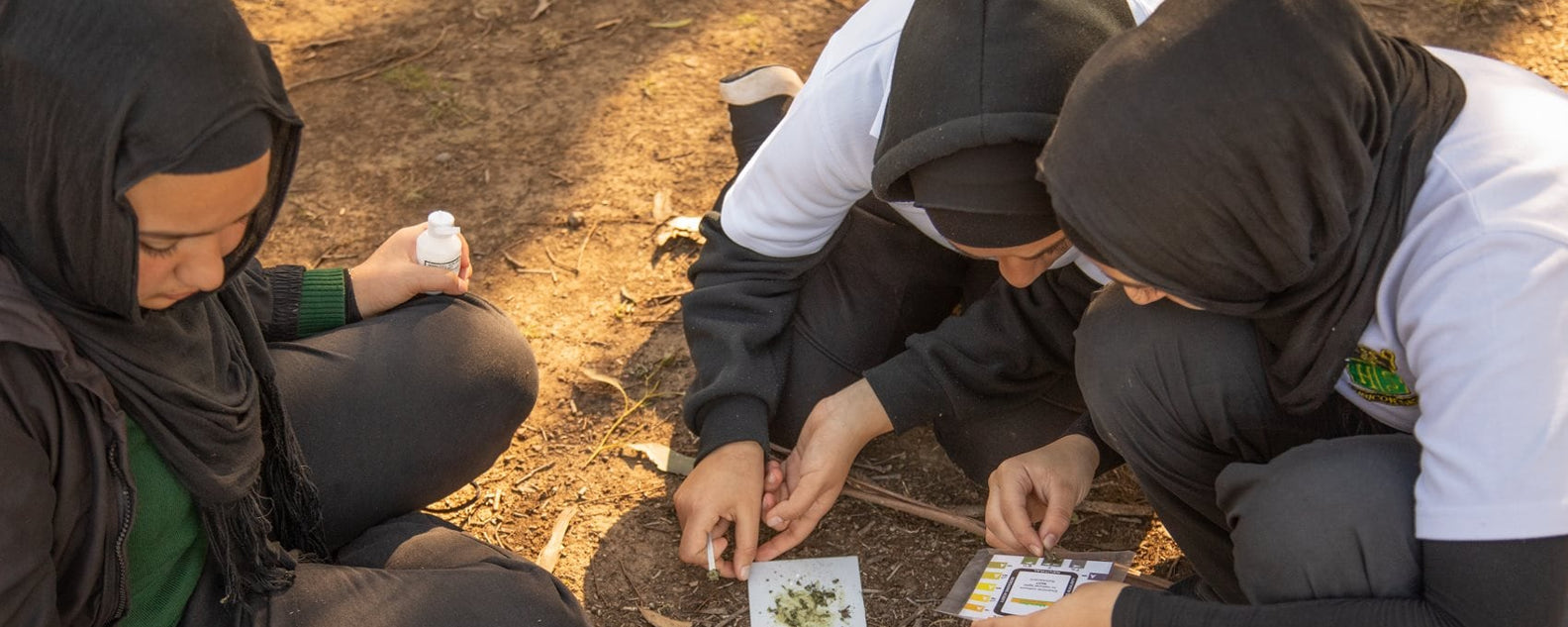Environmental Change and Management
Learn about how humans have contributed to the Cumberland Plain Woodland becoming an endangered biome.

Stage 5
Geography
2 hours
Australian PlantBank, Australian Botanic Garden Mount Annan
Minimum charges apply. Discounts apply for full day programs!
Students will learn about the ecology of protected, remnant environments and how the Garden is effectively managing environmental change to enhance sustainability.
Through abiotic and biotic testing, vegetation surveys, and a mapping exercise, students will analyse the effect of interactions between people, places and environments.
Students will
- Students will annonate a site map as they explore remenent environments, recording important natural and human features of the environment.
- They will use a variety of field tests and use their data to conduct an ecosystem health assessment.
- Students will also learn about environmental management strategies in practise at the Botanic Gardens and use real data to create their own urban plans for the region.
Key content
- Investigate remenant and protected environments.
- Explore how human impacts have resulted in some of these environments listing as critically endangered.
- Investigate sustainability strategies to minimise environmental impacts on the remaining woodland/rainforest.
- Connect geographical information by using appropriate and relevant geographical tools for inquiry.
Links to New South Wales curriculum
Focused Syllabus Outcomes
Geography
- Analyses the effect of interactions and connections between people, places and environments (GE5-3)
- Assesses management strategies for places and environments for their sustainability (GE5-5)
- Acquires and processes geographical information by selecting and using appropriate and relevant geographical tools for inquiry (GE5-7)

Learn about the ecology of protected, remnant environments and how the Botanic Garden is effectively managing environmental change.
Related excursions

Sydney Science Trail excursions are back this August. Explore the program and book your secondary school class excursion for National Science Week.

Students explore works from Jeannie Baker’s Desert Jungle book and exhibition, to learn about thriving desert landscapes, biodiversity, and experience the wonder of time spent in nature.

This full-day program supports Module 3: Biological Diversity in the new 2018 New South Wales Biology syllabus.